FC Copenhagen are currently sat in first place of the Danish Superliga, as they head into the final few games of the championship round. Head coach Jacob Neestrup has done a remarkable job to guide his team to such a high position including earning draws against Manchester City, Sevilla and Borussia Dortmund after a disappointing start saw Copenhagen lose the first six out of 10 fixtures in the league.
Since taking charge of the first team in October earlier this season, Neestrup helped his club cruise through the league, remaining unbeaten for the remainder of the normal league phase, until the championship playoff which saw them lose 1-0 to Randers. That long unbeaten run has helped Copenhagen to climb to the top of the table, leading youthful FC Nordsjaelland by one point.
FC Copenhagen have earned nine points this season from set-piece goals, making it evident that these dead ball situations can be the difference between winning the league or narrowly missing out.
In this tactical analysis, we will look into the tactics used by FC Copenhagen, with an in-depth analysis of how they have been able to use several different routines to create high-quality chances in their variations of corners. This set-piece analysis will look at the reasons behind the different routines used and how their innovative tactics have allowed them to remain unpredictable throughout the season.
Near-post moves
FC Copenhagen have displayed excellent awareness of attacking open spaces in the defending team’s setups. When the near side of the six-yard box has been left unmarked, Copenhagen have used runs from around the goalkeeper to arrive in the target zone unmarked.
With the defender being goal side of the attackers, the path to the target zone is clear, so the movement shown in the image below cannot be disrupted. As a result, players can arrive in the target area with separation from their markers and attempt a headed effort on goal without having to compete for it.
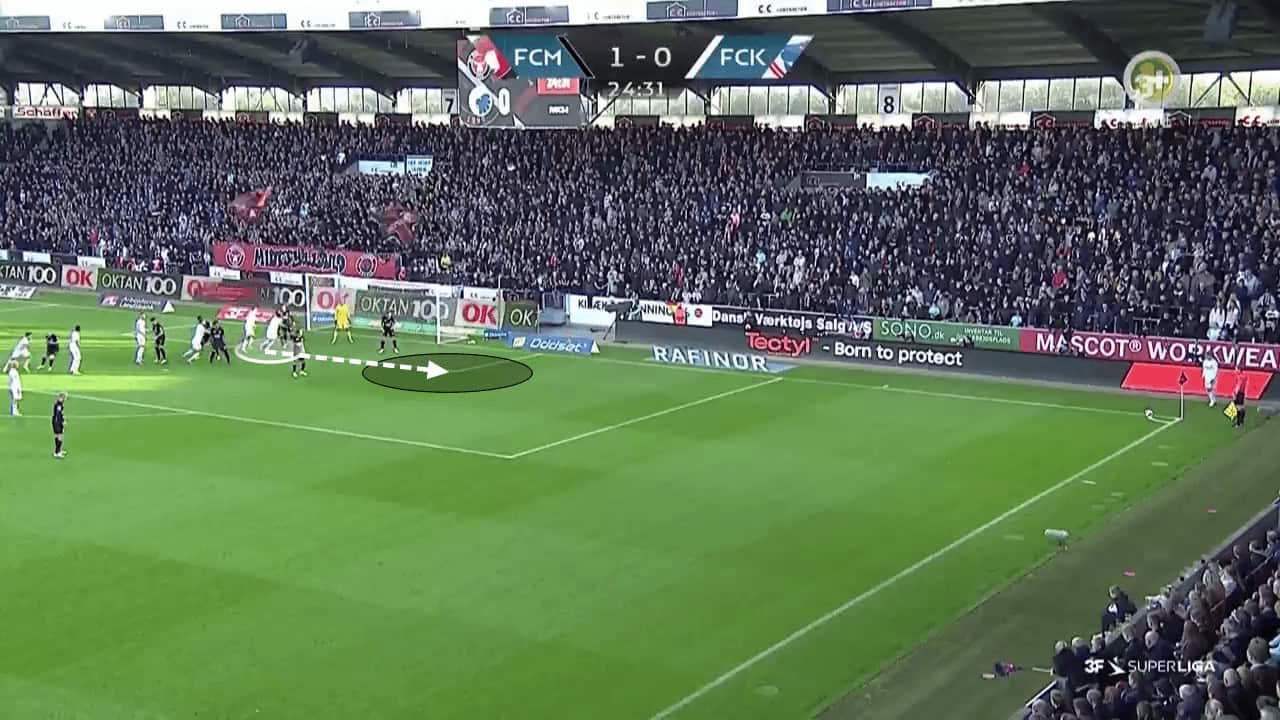
There have been occasions where defending teams have had more zonal cover around the near side of the six-yard box. In these instances, it becomes harder to redirect the effort on goal, and so the goal of the first contact is to cause problems in the second phase, where the defenders move out of their zones as they attempt to clear the ball. Due to the extra zonal markers, the run has to be made from a slightly longer distance where the attacker will be able to gain enough momentum to prevent himself from having their run interrupted.
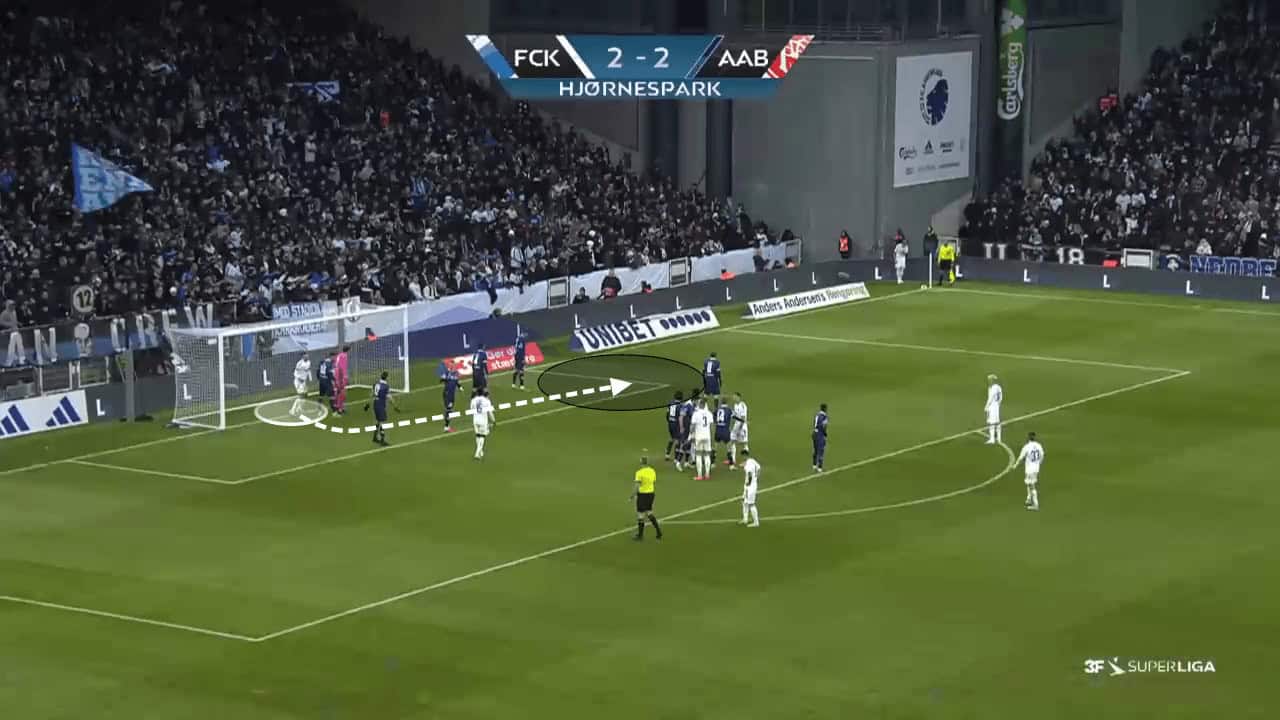
Once the ball is delivered towards the target area, other attackers are able to attack the back post, while their respective markers lose track as their eyes lock onto the ball. The Copenhagen attackers are then able to attack the back post unmarked, which will lead to a simple finish from inside the six-yard box if the flick is accurate enough.
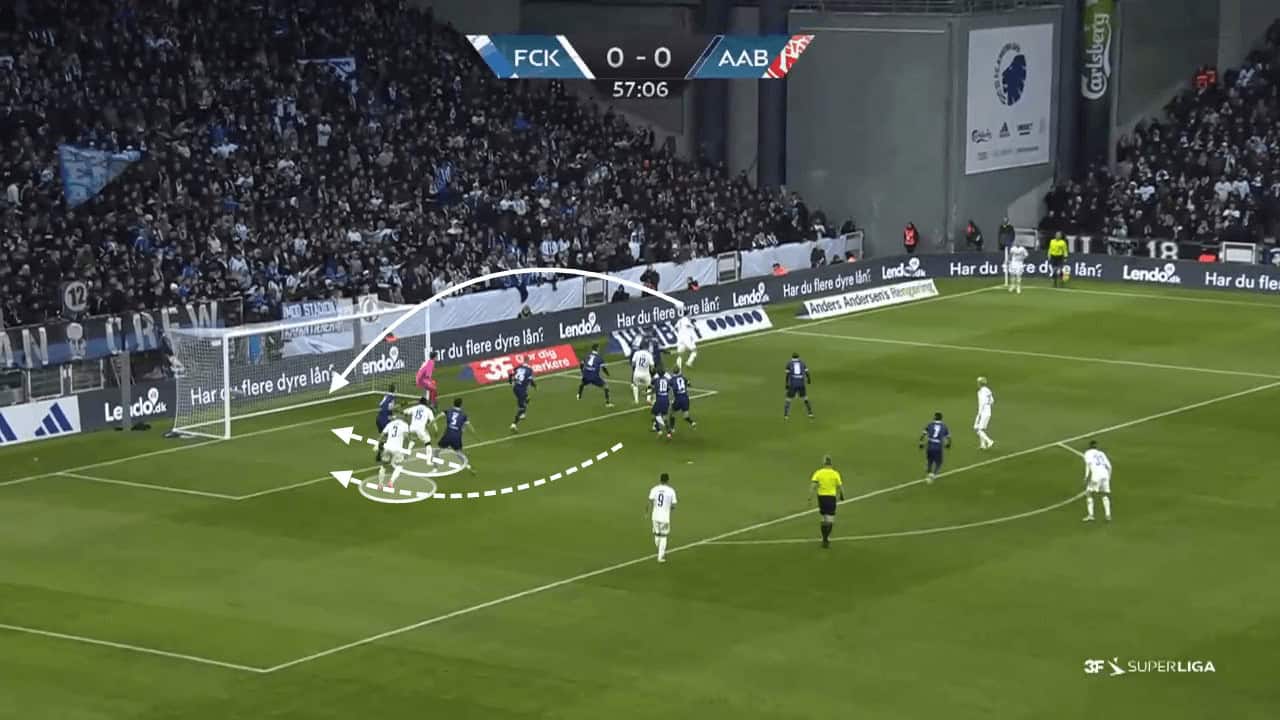
Runs from deep
Another method FC Copenhagen have utilised to create chances from corners this season has been through the use of runs from deep which allow their player to arrive in dangerous areas either unmarked or with a lot of momentum to win the aerial duels with more ease.
One way in which this has been made possible has been through the use of attackers’ close positioning around the penalty spot. The diagram below shows the target player highlighted, as he curves his run around two of his teammates. The two teammates along with their respective man markers form a large four-man cluster which acts as a big screen. The attacker in pink uses this cluster to create separation from his man marker as the defender either has to follow the run the long way round, which would mean he can’t be goal side, or he has to try and cut off the run by moving the other way of the screen. The problem with not following the attacker is that the defender loses track of who he is supposed to be marking. The attacker would then be able to alter their movement, and the defender would have no way of getting within arm’s length of the attacker in time.
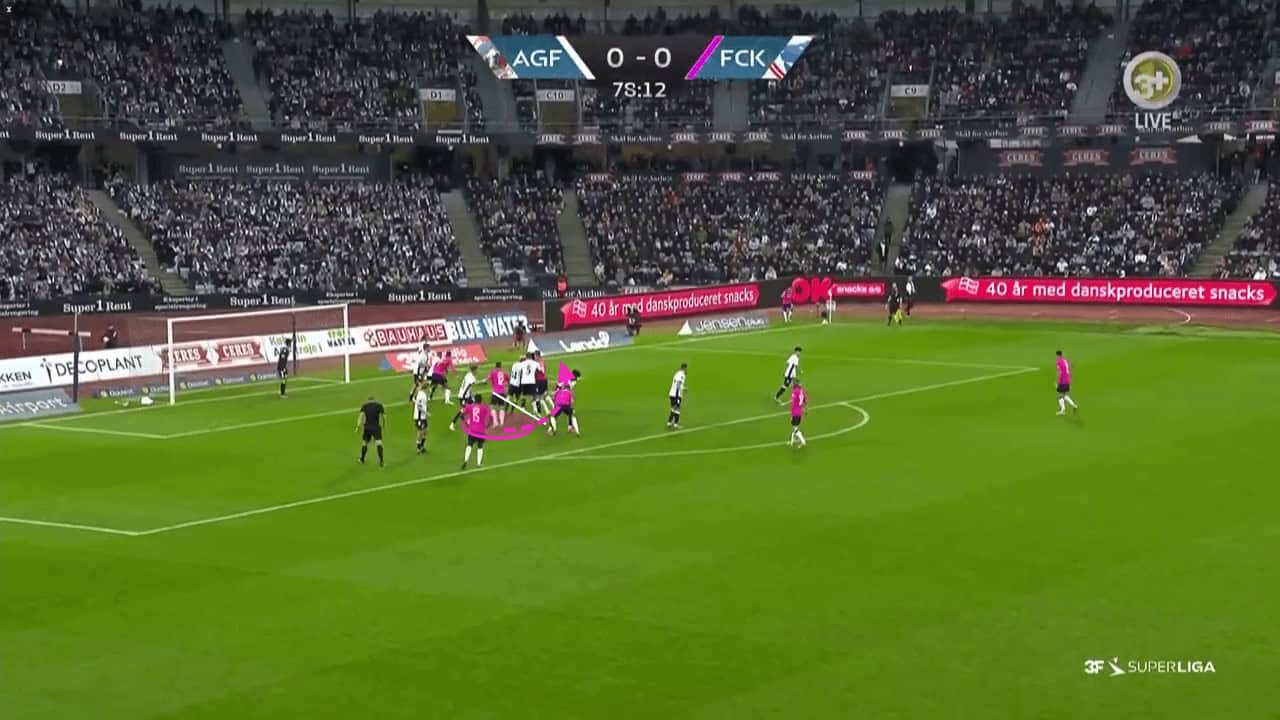
FC Copenhagen have also been able to utilise deep runs to attack zones inside the six-yard box. The opposition team is defending zonally and so Copenhagen’s attackers remain unmarked around the penalty spot. As a result, the attackers can attack the six-yard box unopposed, meaning that they can use the momentum to gain an advantage in the aerial duel over the static zonal defenders.
We can see the Copenhagen attackers darting into different zones around the six-yard box, whilst the last attacker navigates towards the back post to get onto the end of any loose balls or rebounds. The cross can be floated in, providing each attacker the time needed to adjust the run to time the run and meet the ball at its highest point.
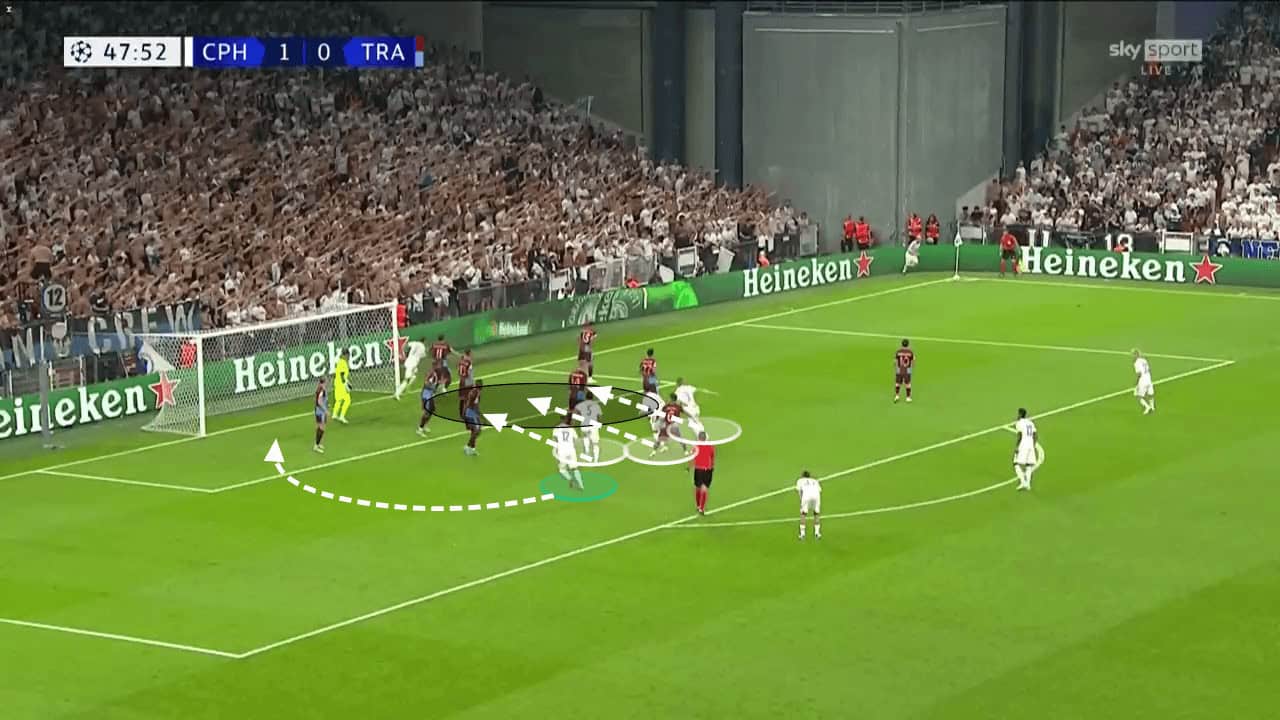
Although the attackers have an aerial advantage due to their momentum, it doesn’t always mean the header will be won or the first contact will be made. However, thanks to the run from deep, the attacker is able to make the first contact, although it isn’t clean or directed. The flick is enough to make the ball bypass the remaining defenders where it can then arrive at the back post for a simple tap-in.
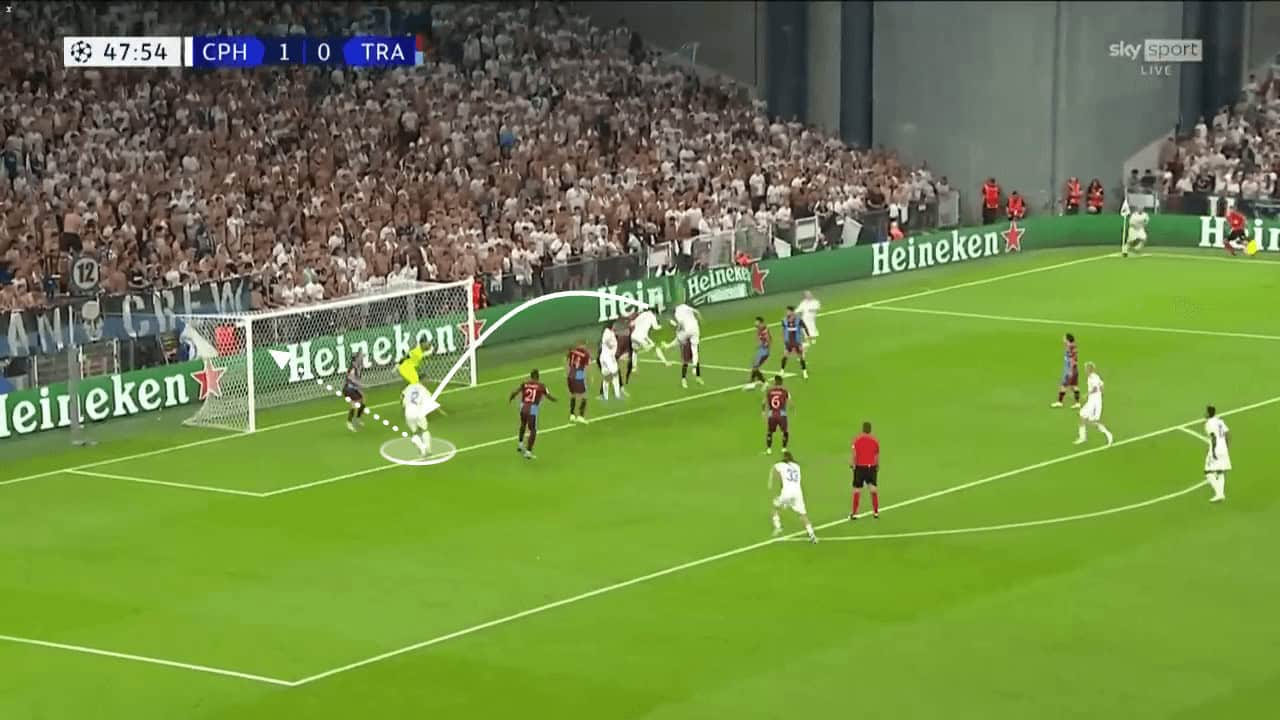
Creating backwards separation
One other method Copenhagen have utilised to create chances from corner kicks is through creating separation by moving backwards away from goal. Moving away from goal provides attackers with the opportunity to gain separation in an easier sense, as they can move away from their marker whilst the defenders’ eyes are tracking the ball, meaning they can’t follow the attacker. However, as the attacker moves away from goal, it becomes harder to get the power required to beat the goalkeeper with a headed effort.
The use of creating backward separation is to get the first contact inside or around the six-yard box, rather than a tool to score directly from. Once the first contact is made in such a dangerous position, it is up to the remaining attackers to react to the second phase and make contact with the ball before a defender to keep the attack alive.
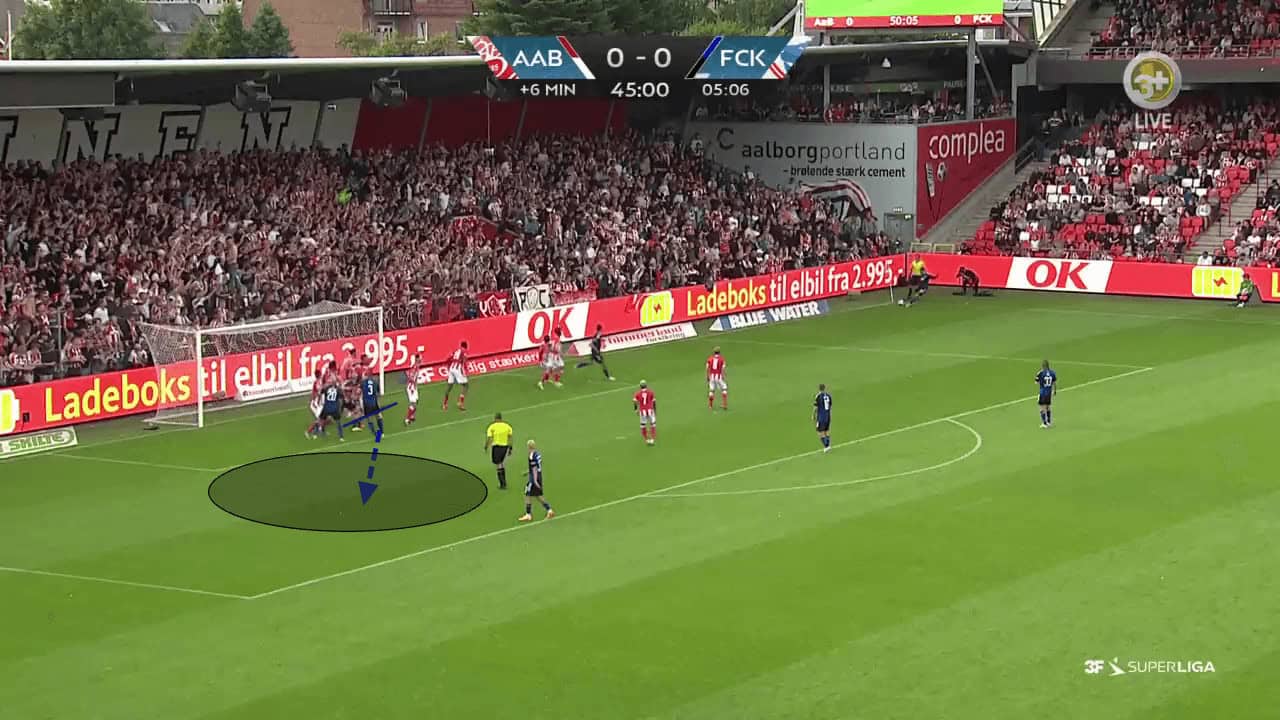
Below is another example of how FC Copenhagen has utilised creating backward separation to create dangerous opportunities from corner kicks. In this example, the attacker can be seen making the step away from goal once the corner is delivered, as the defender’s eyes lock on to the ball and lose track of their marker. The diagram shows the target area around the penalty spot, which is left unmarked.
In cases where the aim is to make the first contact from deeper areas, floated crosses can be utilised to allow the attackers to become more likely to make the first contact. The cross doesn’t have to be whipped in fast, as the defenders have a harder time manoeuvring backwards, and so attackers have more time to position themselves to make contact with the ball. The floated cross also allows the attacking team to be more accurate with the crosses due to the added time the players have time to track the flight of the ball in order to make contact with the ball.
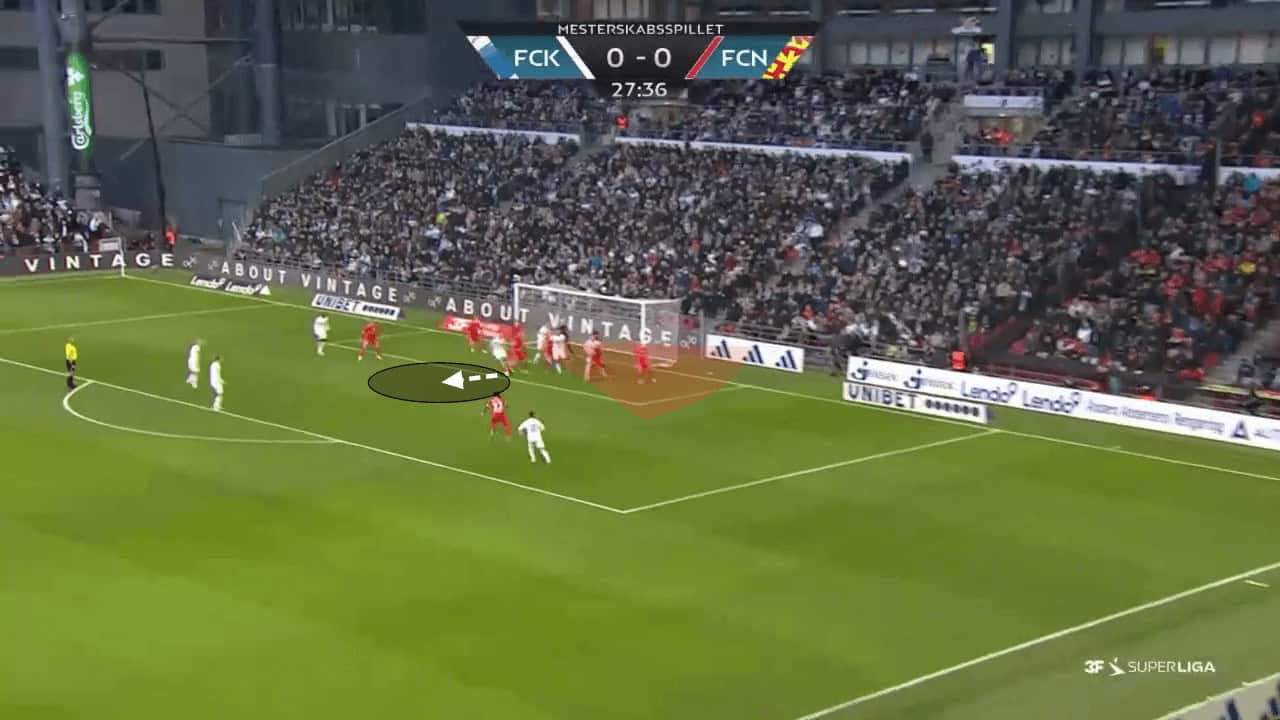
We can see in the picture below, the attacker is able to win the aerial duel where he flicks the ball into a dangerous area inside the six-yard box. The player at the back post can be seen gambling by attacking the back post to get onto the end of the loose ball after it is flicked goalwards.
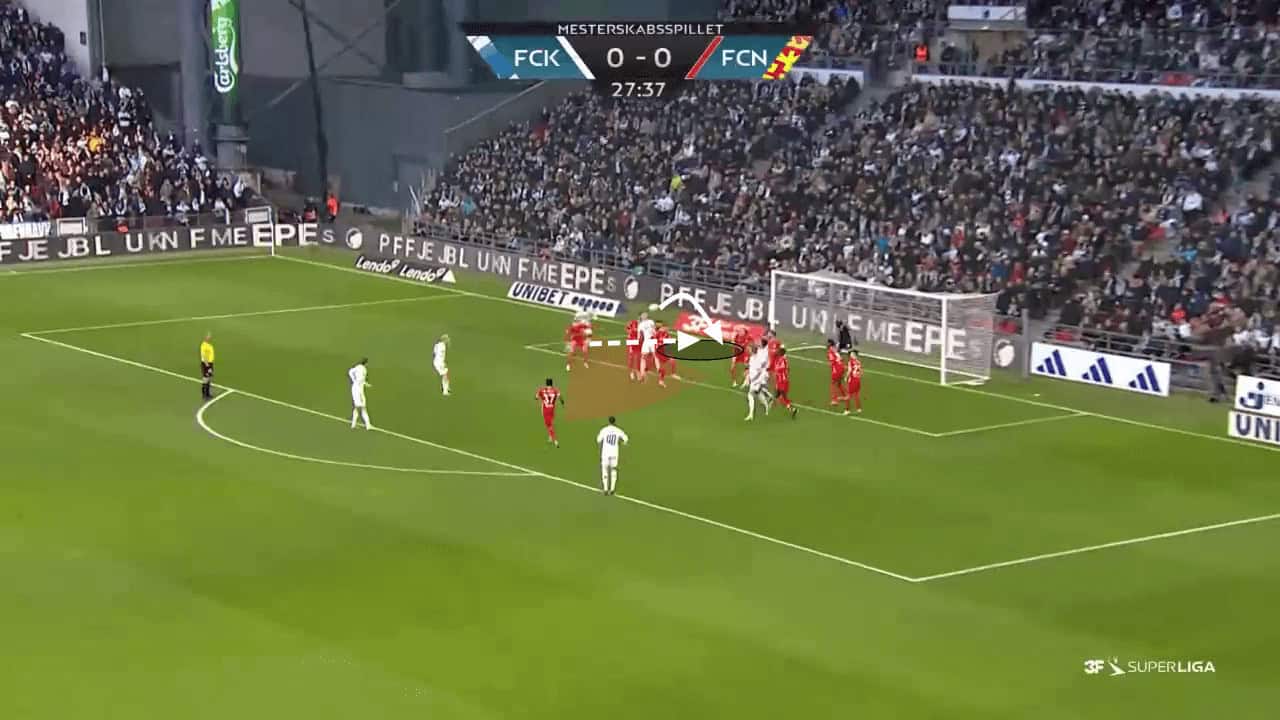
Use of screens
The final method Copenhagen have utilised is the use of screens, to allow a runner from deep to attack the ball unopposed. We can see in the image below, the heavy use of man-marking means that there are plenty of gaps around the six-yard box. As a result, all that is required is to create separation for one of the deep runners who can then attack the ball with momentum.
In the example below, the attacker (pink) makes his run into the target area, whilst his marker is being screened by a teammate. The pink line shows the screen that prevents the defender from moving towards his marker, which gives the target player the separation required to attack the six-yard box with momentum. The momentum of the run allows the target player to attack the ball with plenty of speed, meaning that the headed effort on goal can be more powerful than if it was headed by a static player.

Summary
This tactical analysis has explained the different ways in which FC Copenhagen have been able to remain unpredictable from dead-ball situations.
The use of screens, deep runs, backward separation and attacks at the near post have all contributed to Copenhagen’s upturn in form under their current manager, and remaining unpredictable in their final few games of the championship playoffs could be the key between winning the league or narrowly missing out.






Comments